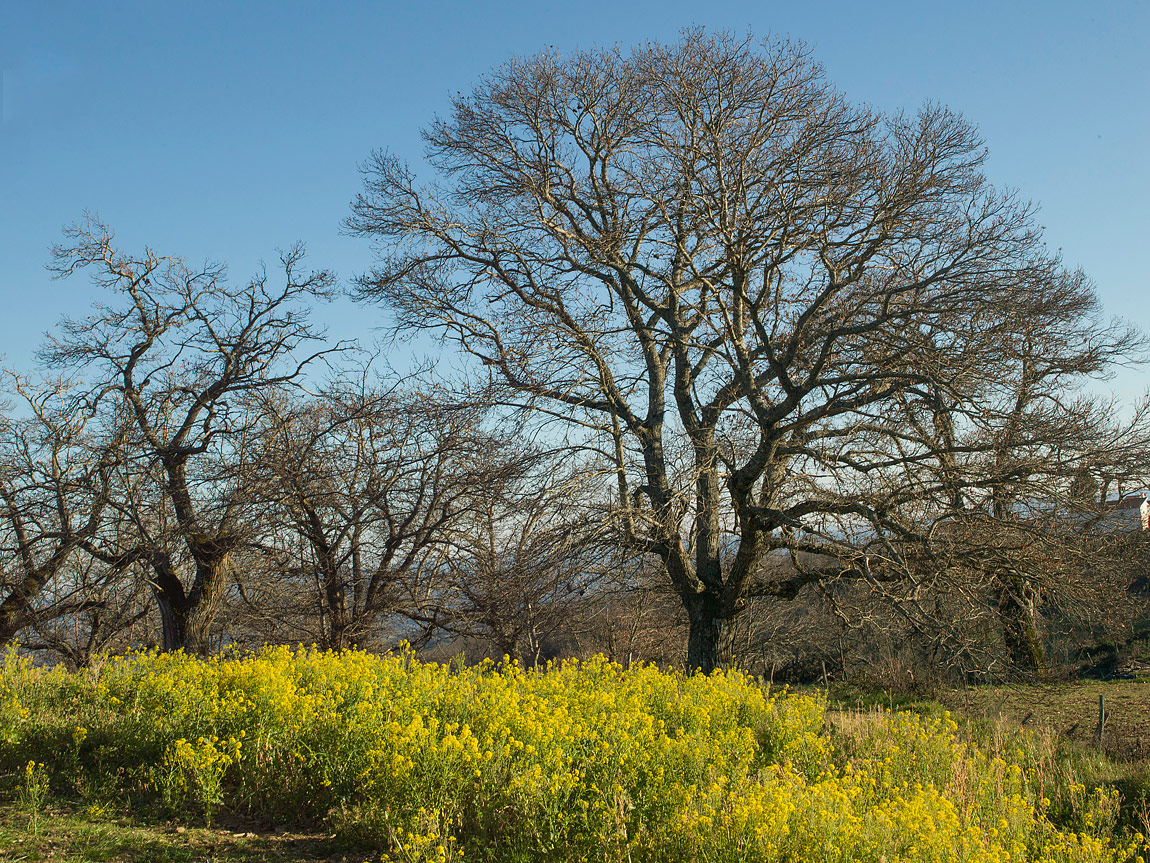In the higher parts of Alfândega da Fé, such as in Soeima parish, sweet chestnuts (Castanea sativa Mill.) dominate and form open forests. This is a deciduous tree, losing its leaves during the winter and forming new ones again in the spring. Chestnut cultivation area has been increasing in this region due to the reasonable prices of chestnuts in the markets and the increasingly hot and dry summers that force the tree to be planted at higher altitudes.
While walking around the region some weeks ago, on a beautiful sunny afternoon, I was attracted by a yellow spot in the middle of an old chestnut plantation. The bright yellow colour contrasted with the dark brown of the trunks and branches of the bare chestnuts.
I approached to photograph and see what plant it was. The yellow flowering plants were turnips! I asked why turnips were sown. I was told that turnips were used to feed farm animals such as mules and donkeys, still used in this region to pull carts and ploughs.
In a few weeks, the scenario will be totally different. The yellow flowers have disappeared to give rise to silique fruits, and the chestnuts, now “naked” and bare, will be full of green leaves. The image was captured with a Hasselblad H3D and an HC 50-110mm 3.5-4.5 lens, using a 55mm focal distance.


